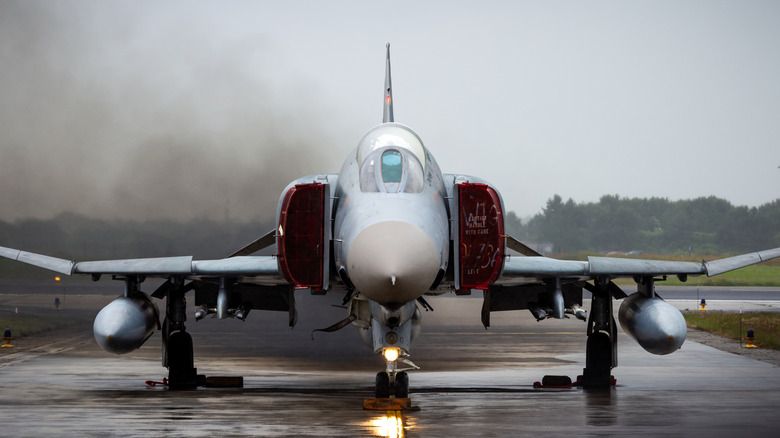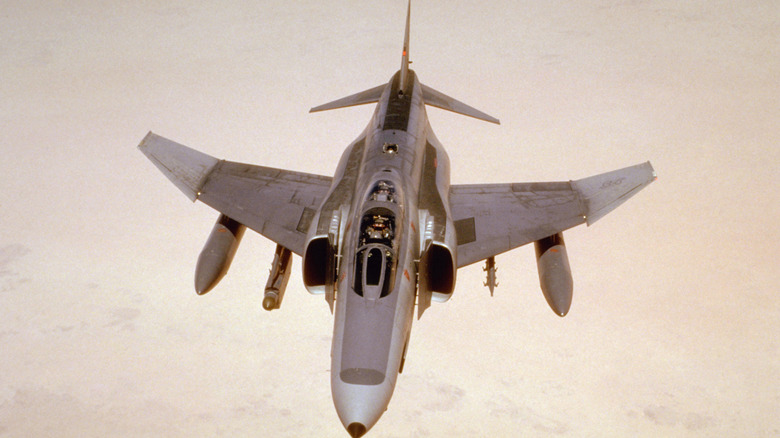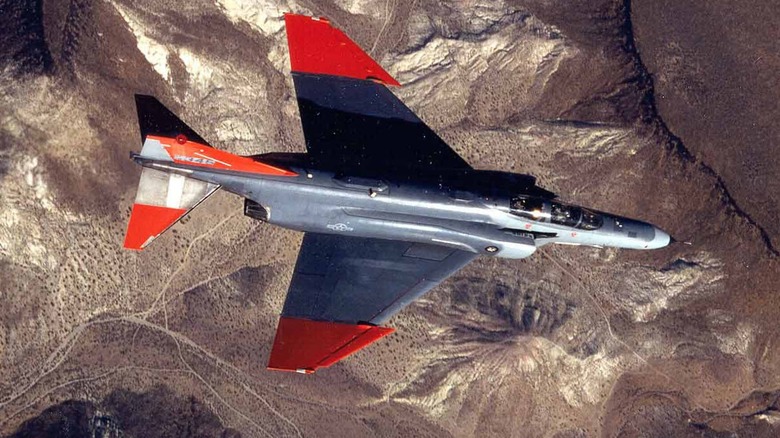Why Was The F-4 Phantom Retired And What Was Its Top Speed?
The F-4 Phantom was a fighter jet that entered service with the U.S. Navy in 1961 and eventually found its way to the Air Force two years later only for the Marine Corps to adopt it too. Four decades in service saw it become one of the best-selling fighter jets in U.S. history. Unfortunately, all things must come to an end, even top-performing twin-engine multi-role fighter jets.
The military officially retired the Phantom in 1996. There are still a number around the world as other countries use them, though some have expressed interest in replacing their Phantoms with up-to-date fighters. As well as the Phantom performed, it's gradually become a relic. The Phantom had a number of flaws. The airframe struggled in dogfights because of the Gs and early iterations lacked a gun.
However, some pilots loved the fighter, and it proved itself over and over again in combat zones. The Navy gradually replaced the Phantom with the F-14 Tomcat while the Air Force phased it out in favor of the F-15 Eagle and F-16 Falcon.
The Phantom could reach Mach 2
The F-4 Phantom is a twin-engine multi-role fighter built with two General Electric J-79-GE-15 engines. Each power plant puts out 17,000 lbs of thrust, giving the Phantom a maximum speed of 1,473 mph (Mach 2.23) at 40,000 feet and a cruising speed of 590 mph. It might not look like much, which is what earned it several nicknames like "Double Ugly" and "Rhino," but it could keep up with most of its adversaries and contemporaries in terms of speed. But its quickness was also one of the causes for the plane's control issues. At low speeds (just below Mach 1), barely moving the stick could produce 6 Gs, whereas flying faster than Mach 2 and pulling the stick straight back barely produced two Gs.
It boasted an impressive performance during its heyday, broke a number performance records, and shot down more enemy aircraft than any other fighter in the Vietnam War. In 1961, it flew 1,604 mph setting the world speed record.
The F-4 has one final mission
Although the Pentagon retired the F-4 Phantom in 1996, it has gone through a fairly unique retirement ritual that has made it useful beyond its years. While the Air Force has an arsenal of remotely-piloted drones that flies a variety of missions worldwide, it decided to grant a contract to BAE Systems convert the F-4 into a drone itself for research and development purposes. It was redesignated as the QF-4, and the remaining U.S.-owned F-4 Phantoms were overhauled into remotely-piloted aerial targets, simulating the combat maneuvers of enemy aircraft.
The QF-4 could still hold a pilot but was otherwise remotely piloted. This allows the Air Force to not only test combat maneuvers with live fire, but it also gave the Air Force the opportunity to test and develop air-to-air systems. Tyndall Air Force Base in Florida and Holloman Air Force Base in New Mexico were both home to the QF-4 program. As of 2016, the QF-4 retired from active duty.


